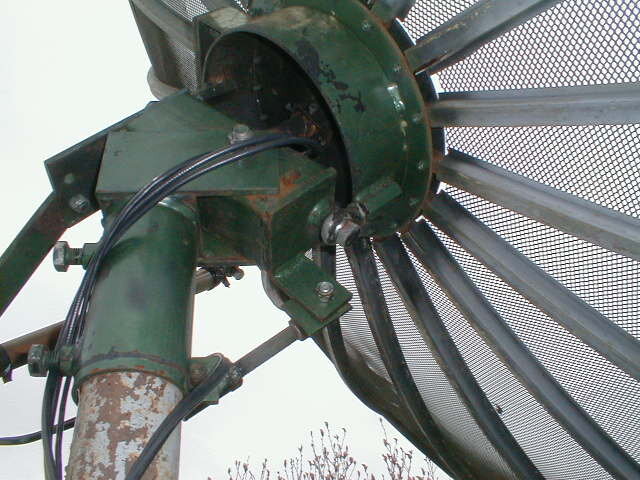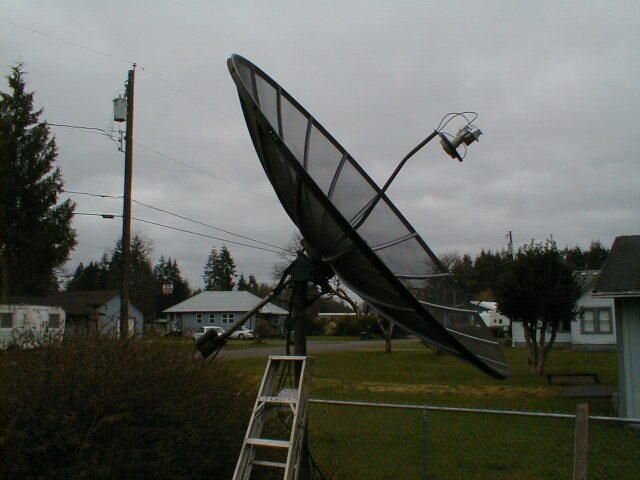Not as easy as I had hoped.
I have my BUD hooked up to the receiver and with elevation set I'm getting only a ghost of a picture on a couple sat.s/channels. Signal is 90 but quality is 1 or 2 at best.
I set the elevation to 90 deg. - 47 lat. = 43. now I need to adjust the declination down a few degrees from the previous setting.
My mount is almost exactly like the attached drawing. I can't adjust from the bottom pivot bolt since it is already screwed in all the way. It appears that all previous adjustments were made with the top pivot bolt. There is a close up of the top bolt and it is threaded into the "long" nut welded to the dish center ring. (same with the bottom) To do any adjustment I would have to remove the pivot bolt from the eye end and rotate it out to lower the dish or in to raise it. That wouldn't be to big a deal if I had some help, but I'm doing this all by myself.
I may have to build some kind of support for the dish to keep it from tilting forward or rolling right or left. Since this adjustment will be some 'trial and error' until I get the correct angle reading, this could be tedious, at best.
Same thing if I search out volunteer help.
Maybe I mark my elevation setting and then back it off until the dish is vertical (90 deg.), block it up and remove/adjust the pivot bolt to the actual declination number. The return the dish to the proper elevation angle.
Sorry, just thinking "out loud"!
Any ideas.
Steve
I have my BUD hooked up to the receiver and with elevation set I'm getting only a ghost of a picture on a couple sat.s/channels. Signal is 90 but quality is 1 or 2 at best.
I set the elevation to 90 deg. - 47 lat. = 43. now I need to adjust the declination down a few degrees from the previous setting.
My mount is almost exactly like the attached drawing. I can't adjust from the bottom pivot bolt since it is already screwed in all the way. It appears that all previous adjustments were made with the top pivot bolt. There is a close up of the top bolt and it is threaded into the "long" nut welded to the dish center ring. (same with the bottom) To do any adjustment I would have to remove the pivot bolt from the eye end and rotate it out to lower the dish or in to raise it. That wouldn't be to big a deal if I had some help, but I'm doing this all by myself.
I may have to build some kind of support for the dish to keep it from tilting forward or rolling right or left. Since this adjustment will be some 'trial and error' until I get the correct angle reading, this could be tedious, at best.
Same thing if I search out volunteer help.
Maybe I mark my elevation setting and then back it off until the dish is vertical (90 deg.), block it up and remove/adjust the pivot bolt to the actual declination number. The return the dish to the proper elevation angle.
Sorry, just thinking "out loud"!
Any ideas.
Steve





